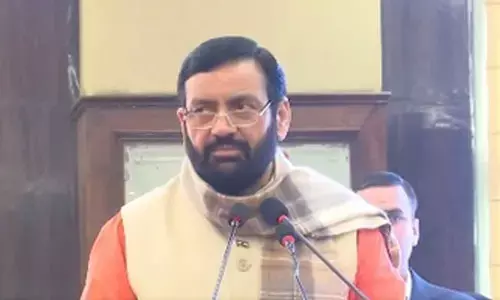Ukraine war: Tensions keep rising in Crimea

Crimea is incredibly significant at the strategic level. It is a base for Russia’s Black Sea Fleet, and provides critical access to trade through ports such as Sevastopol. But in terms of the narrative of the conflict, Putin and his allies have woven Crimea into the Russian national myth, framing it as a vital part of the nation. Losing the region would be humiliating and costly for the regime
To paraphrase the words of the Ukrainian president, Volodymyr Zelensky, everything began with Crimea, and everything will end there as well. When Russia first occupied Crimea in 2014, it was a major win for Putin, who successfully called the west's bluff by proceeding to annex the peninsula with minimal international opposition.
Now, as Ukrainian forces consider how to "de-occupy" Crimea, the Russian high command needs to think about how to prevent the recapture of the one territory that they cannot afford to lose.
Ukraine watchers are reporting that Russia is digging in along the northern edge of Crimea, actively recruiting labourers to help fortify the area around the Isthmus of Perekop, the narrow strip of land connecting Crimea to the rest of Ukraine.
Russia has been continuously reinforcing the area since its initial occupation back in 2014, more recently redoubling defences each time Ukrainian forces move closer. As a result, both the narrow land bridge and the adjoining coastline of the Syvash Bay are now hardened against attack. Taken together with rumours of forcible evacuation of any remaining civilians, it is fair to say Russia is gearing up for something to happen in the area.
Why Crimea matters
Crimea is incredibly significant at the strategic level. It is a base for Russia's Black Sea Fleet, and provides critical access to trade through ports such as Sevastopol. But in terms of the narrative of the conflict, Putin and his allies have woven Crimea into the Russian national myth, framing it as a vital part of the nation. Losing the region would be humiliating and costly for the regime.
For years, the idea of Ukraine reclaiming Crimea has appeared more than remote. But Kyiv's military successes at the back end of 2022 have since changed this perception, and the recapture of Kherson back in September has put Ukraine within striking distance. So far the threat of a nuclear response has appeared to be a bluff, with Russia failing to follow through, despite a series of attacks by Ukraine on Russian military installations there. And Kyiv's narrative of needing to liberate all territory occupied by Russia since 2014 is gaining international support. A spring offensive to the south has been all but confirmed, with a stated objective of cutting off Crimea from Russian support.
But the battle for Crimea itself is still a way off. Significant groundwork needs to be in place before any direct offensive can take place. Nevertheless, an operation that once seemed impossible is now being seriously considered by both sides.
Fight for Crimea
Should it come to a military operation, Crimea is not going to be an easy fight. Options such as an amphibious or airborne assault are too risky, given that Russia still has serviceable naval and air defence assets. A direct approach would see a massive Ukrainian offensive down the Isthmus of Perekop. This could result in Ukrainian forces being funnelled into the area Russia is currently reinforcing, which is far from ideal. If there is a place to stop a Ukrainian land force, this would be where it happens. The isthmus is an ideal choke point, with little room to manoeuvre. This latest round of defensive construction is turning the area into a formidable position – the narrow space is ideal for Russian massed artillery.
By the time Ukraine launches its counter-offensive in the south, the reality on the ground should look different. Russia's winter-spring offensives in the Donetsk and Luhansk oblasts have faltered and the invasion force has taken significant losses in months of heavy fighting in Bakhmut. Russian military morale is reported to be close to breaking point with reports of friction between regular army and Wagner Group mercenaries.
The first aim of any Ukrainian southern offensive would be to isolate the peninsula from resupply completely. Despite repairs to the Kerch bridge, the one road link between Crimea and Russia, it has been shown be vulnerable and closing it again would mean Russia needing to resupply by sea or air, which is unsustainable for any length of time. If the peninsula can be cut off, the Russian presence in Crimea becomes unsustainable.
The fortifications reportedly being prepared in advance of a possible Ukrainian assault show that Moscow, at least, is taking this prospect seriously. But a great deal will depend on Kyiv receiving superior weaponry in sufficient quantities to launch an attack. One thing seems certain though – the outcome of the battle for Crimea will be a decisive moment in the course of this conflict. (Writer is Teaching Fellow, School of Strategy, Marketing and Innovation, University of Portsmouth, England)

















